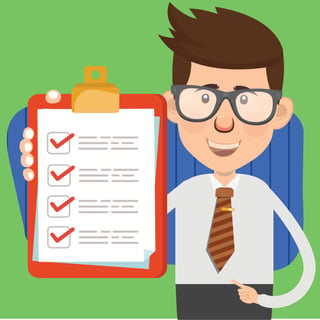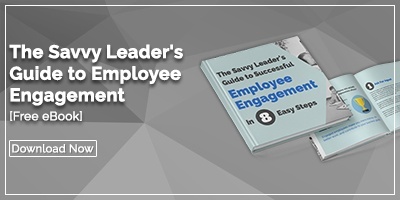 I think we’ve all heard stories about “backsliding” or a lack of sustainment after formal Kaizen Events. When we plan and conduct a Kaizen Event (aka Rapid Improvement Event), it’s a significant investment in people’s time. Organizations need to do their best to ensure that benefits are realized and sustained - otherwise, the Kaizen Event might be wasted effort and that might derail our broader Lean transformation efforts.
I think we’ve all heard stories about “backsliding” or a lack of sustainment after formal Kaizen Events. When we plan and conduct a Kaizen Event (aka Rapid Improvement Event), it’s a significant investment in people’s time. Organizations need to do their best to ensure that benefits are realized and sustained - otherwise, the Kaizen Event might be wasted effort and that might derail our broader Lean transformation efforts.
There are a number of things we can do after a Kaizen Event to help increase our chances of sustainment.
First, there are a few things we can do BEFORE a Kaizen Event that will help:
Start with Small Kaizens
Too many organizations try to jump right into solving big, complex, meaningful problems, but it can be intimidating and can keep employees and leaders from wanting to participate if they’re worried about failure.
The classic definition of Kaizen means “good change” and is used in the context of ongoing continuous improvement. Massaki Imai, author of the seminal book KAIZEN, wrote about the benefits of starting small, aiming to build confidence and engage people in solving problems that matter to them.
Joe Swartz and I wrote, in Healthcare Kaizen, about the power of starting small and building capabilities to then move on to bigger problems, like Kaizen Events can solve. Starting small is something that’s emphasized in works ranging from Robert Maurer’s work on Kaizen and our brain (hear my podcast with him) and Paul Akers and his “fix what bugs you!” mantra from his book 2-Second Lean.
Plan Properly
A Kaizen Event might be doomed to fail if you’ve failed to plan properly. Experts and leading authorities on Kaizen Events will emphasize that the work needs to start weeks, if not months, before the formal event week or days. Planning includes everything from forming a team that includes the right stakeholders, gathering data, and doing other heavy-lifting that would otherwise slow you down if you waited until the Kaizen Event week. Planning is critical… but don’t go to the other extreme where the problem’s solution is predetermined before the Kaizen Event. Don’t make the Kaizen Event a formality.
Don’t Leave a Huge Action Item List
Too many Kaizen Events are deemed “failures” because changes didn’t get implemented during the event. The intent of a Kaizen Event is to actually test and evaluate changes during the event. Sure, there are always going to be a few “action items” to follow up on (from a document sometimes called a “kaizen newspaper”). But, if your events end with no changes and a promise or a list of things to do, it’s less likely that people will be able to find the time to implement these changes. When you have people’s time carved out for the event, you need to make the most of it - which includes testing changes and taking action.
If you’re finding that you run out of time to implement anything in your Kaizen Events, consider making the scope smaller for future events. It’s better to implement a smaller change than to spend a week analyzing and planning without doing.
Engagement and Buy In
Instead of complaining after the Kaizen Event that staff or managers haven’t “bought in” to the changes and the new process, you can help yourself out working to build that buy in before and during the event. Don’t limit your discussion to the formal Kaizen Event participants.
It’s really important to get input from others, even if you pull them aside for a few minutes during the Kaizen Event days. Also, it can help to invite everybody to the formal report out that you might do at the end of the day. Don’t just invite executives. Show respect for the team members in the areas where their work will be affected.
Training and Handoff
Too often, I hear people complain about a “lack of sustainment” after a Kaizen Event. The event leaders might go back and check after 30, 60, or 90 days and they’ll describe a situation where it seems that people have gone back to the old way of doing things.
When you dig deeper, you sometimes learn that the new method was never really fully embraced or adopted to begin with. It’s tempting to pilot a new process during the Kaizen Event week, writing standardized work, and declaring victory. Don’t declare victory prematurely!
You can’t expect to just throw the standardized work document at people. Even if it’s after the formal Kaizen Event, you should plan and budget for time and resources to train everybody affected by this new process.
Continuous Improvement
During a Kaizen Event, we might talk about how “the way we’ve always done things” isn’t necessarily the best way to keep doing the work. The same is true after the Kaizen Event. We shouldn’t view the new process as permanent since it’s likely not perfect. Hopefully, it’s significantly better than the old way of doing things, but it can always be improved.
As we’re training people on the new process, we should get their input and ask them, “How can we further improve this?” The best way to ensure sustainment is to make sure we never stop improving. The large improvement of a Kaizen Event should be followed by smaller iterative improvements. That’s also one way we can create and reinforce a culture of continuous improvement where everything is open to small improvements on an ongoing basis.
“Copy and Kaizen”
Finally, there’s a temptation to “copy and paste” the solution from our Kaizen Event from the pilot area to our other departments or sites. Just as we emphasize engagement and continuous improvement in the rollout from the Kaizen Event team to daily operations, we can use the same tactics to ensure that the new process is embraced in other areas.
As they discussed in our November webinar, Dr. John Toussaint and Paul Pejsa, from Catalysis, talk about the need to “copy and kaizen” -- share a new practice with other areas or organizations and ask them to refine or further improve this new method. You can check that out here.
Those are just a few tips and ideas about how to be more successful in your Kaizen Events. What other tips or advice do you have from your own experience?



Add a Comment